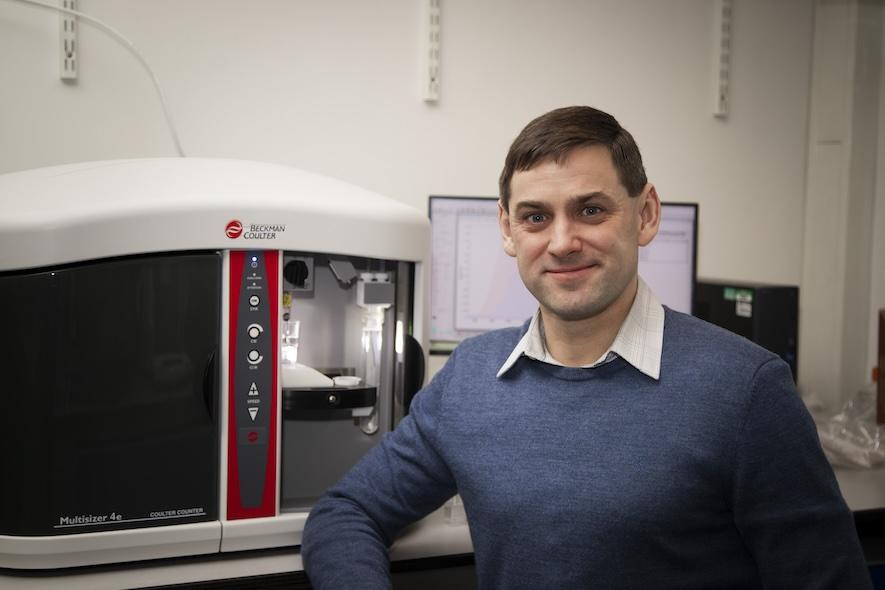
Cell size regulation and cell fate decisions.
The goal of our laboratory is to mechanistically understand how animal cells control their size, and what roles cell size regulation plays in development, health and disease. This is an intriguing topic because cell size is the most fundamental and universal, yet poorly understood, property of all cells. While different cell types in our body differ in size by many orders of magnitude, cells of a given type are incredibly uniform in size, suggesting that cell size is tightly controlled and crucial for tissue function. Consistent with this, significant cell size alterations are often associated with diseases and ageing. Nevertheless, we know surprisingly little about how size affects specific aspects of cell physiology, and we are only beginning to understand what molecular mechanisms regulate animal cell size.
Using an interdisciplinary approach that combines genome editing, quantitative live-cell microscopy, biochemistry, and mathematical modeling, we have identified a cell-autonomous molecular mechanism that controls mammalian cell size (Zatulovskiy et al., Science 2020). We demonstrated that cell growth in size dilutes the key cell cycle inhibitor RB (retinoblastoma protein), thereby triggering cell division. The fact that smaller cells are born with higher concentrations of RB ensures they have more time to grow and reach the target size before diluting RB sufficiently to progress through the division cycle.
This discovery not only provides a long-sought molecular mechanism for cell size homeostasis but also has an important conceptual implication: any cellular process can, in principle, be modulated by cell size, as long as its positive and negative regulators scale differently with size. In a follow-up study, we identified dozens of other proteins whose concentrations change with cell size (Lanz* and Zatulovskiy* et al., Mol Cell 2022; Zatulovskiy* and Lanz* et al., Front Cell Dev Biol 2022). These proteins are involved in a wide range of essential cellular processes, from cytoskeleton organization and metabolism to DNA repair and cell proliferation. This opens several exciting avenues of research that the laboratory is actively pursuing.
In our research we use a systems biology approach and a set of state-of-the-art quantitative techniques, including live-cell fluorescence microscopy, SILAC proteomics, and CRISPR/Cas9-mediated gene editing, to understand how animal cells regulate their size and how cell size affects cell physiology and modulates cell fate decisions (including decisions to differentiate, divide, and die).
Research objectives
-
Identify the molecular pathways that sense and control the size of animal cells
-
Determine why animal cells tightly control their size and how changes in cell size affect cell physiology
-
Understand how cells integrate numerous dynamic signals (including cell size and cell cycle information) to make robust cell fate decisions – i.e., decisions to divide, differentiate, or undergo programmed cell death
-
Decipher the roles of cell size dysregulation in cancer and ageing
Key publications
M.C. Lanz*, E. Zatulovskiy*,#, M.P. Swaffer, L. Zhang, I. Ilerten, S. Zhang, D.S. You, G. Marinov, P. McAlpine, J.E. Elias, J.M. Skotheim#. Increasing cell size remodels the proteome and promotes senescence. – 2022 – Mol Cell. 82(17): 3255-3269.e8. doi: 10.1016/j.molcel.2022.07.017.
* co-first authors with equal contribution; # corresponding authors.
E. Zatulovskiy, S. Zhang, D.F. Berenson, B.R. Topacio, J.M. Skotheim. Cell growth dilutes the cell cycle inhibitor Rb to trigger cell division. – 2020 – Science – 369(6502): 466-471. doi: 10.1126/science.aaz6213.
E. Zatulovskiy, J.M. Skotheim. On the molecular mechanisms regulating animal cell size homeostasis. – 2020 – Trends Genet. – 36(5): 360-372. doi: 10.1016/j.tig.2020.01.011.
L.P. Cramer, R.R. Kay, E. Zatulovskiy. Repellent and attractant guidance cues initiate cell migration by distinct rear-driven and front-driven cytoskeletal mechanisms. – 2018 – Curr Biol. – 28 (6): 995-1004. doi: 10.1016/j.cub.2018.02.024.
E. Zatulovskiy, R. Tyson, T. Bretschneider, R.R. Kay. Bleb driven chemotaxis of Dictyostelium cells. – 2014 – J Cell Biol.– 204(6): 1027-1044. doi: 10.1083/jcb.201306147.
R. Tyson, E. Zatulovskiy, R.R. Kay, T. Bretschneider. How blebs and pseudopods cooperate during chemotaxis. – 2014 – PNAS – 111(32): 11703-11708. doi: 10.1073/pnas.1322291111.
